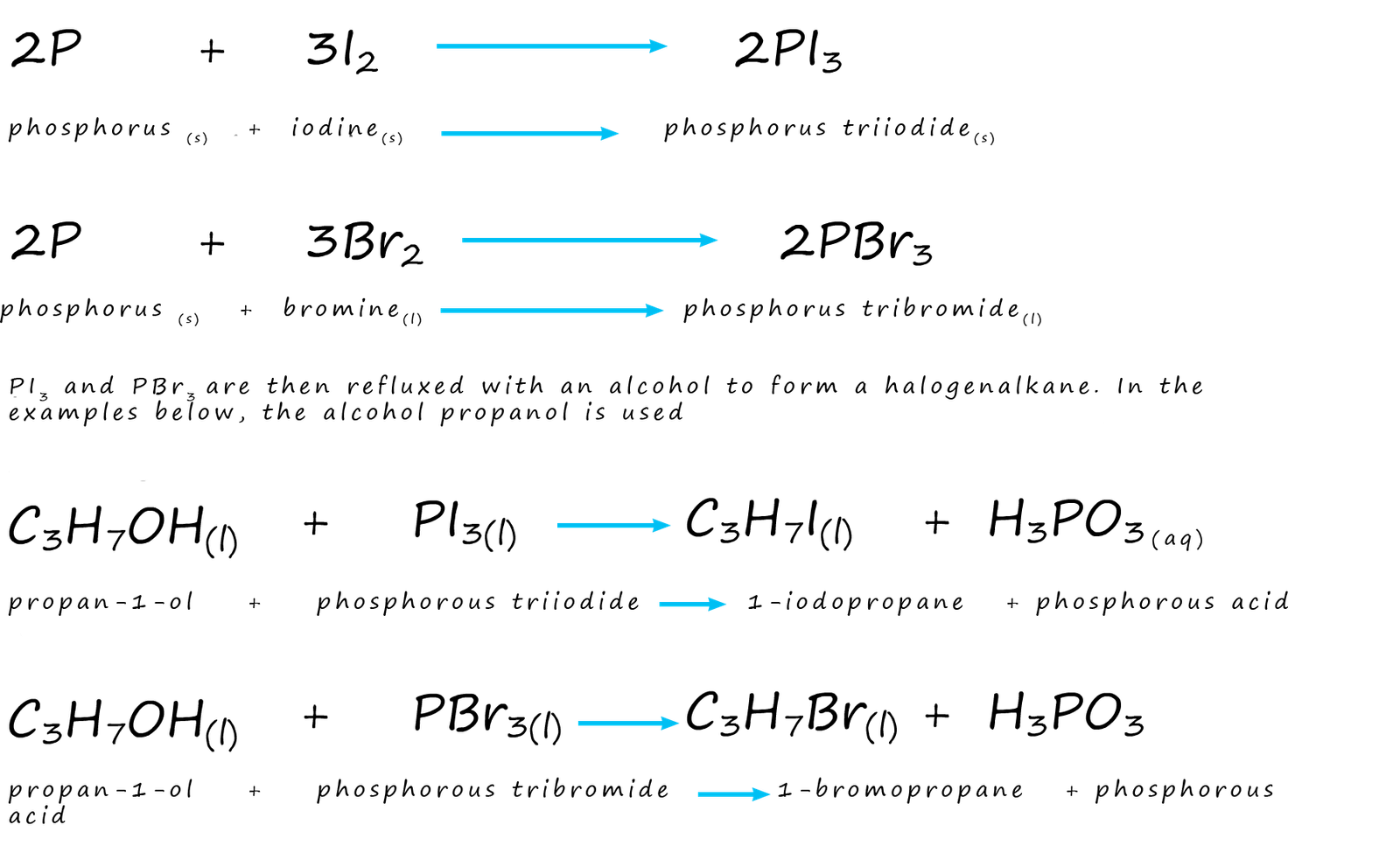

The preparation of halogenalkanes from alcohols essentially involves replacing the hydroxyl functional group (R-OH) on the alcohol with a halogen atom (-X), we can summarise this substitution reaction as:
There are a number of reagents that will enable you to successfully carry out this reaction. However the ease in which the hydroxyl group (-ROH) in the alcohol is substituted for a halogen atom (-X) various with the type of alcohol used. Tertiary alcohols easily undergo this substitution reaction but primary and secondary alcohols are not so reactive and different reaction conditions are needed to produce halogenalkanes using these classes of alcohol. This is outlined below.
The hydroxyl functional group in an alcohol can be replaced by a halogen to form a halogenalkanes. The simplest method would simply be treatment of the alcohol by the corresponding acid (HX), this is shown below:
However as mentioned above this only really works well for tertiary alcohols where the reaction is very quick and can be as simple as bubbling the halogen halide gas (HX(g)) through a solution of the tertiary alcohol, although the reaction would be easier to control if you were to simply mix the tertiary alcohol with concentrated hydrochloric acid (HCl) or hydrobromic acid (HBr) at room temperature, for example the image below shows the equations for the chlorination and bromination of two tertiary alcohols using hydrochloric and hydrobromic acids.
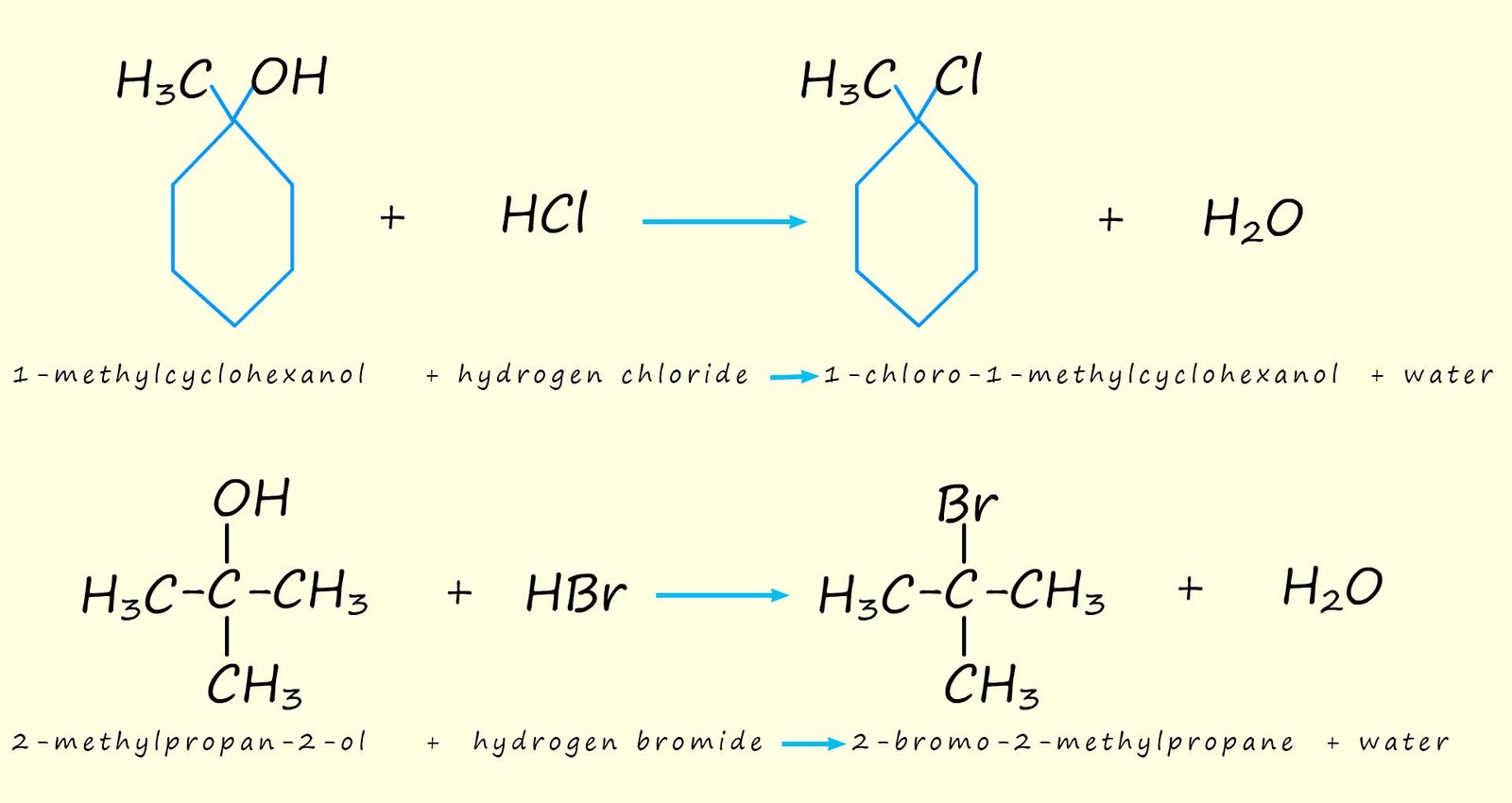
Reactions of primary and secondary alcohols with acids (HX) are slow and the conversion of these alcohols to the corresponding halogenalkanes are best done using different reagents. There are many other types of reagents that will enable you to carry out the conversion of primary and secondary alcohols to halogenalkanes, these include for example the phosphorus halides (PX3 and PX5). Phosphorus trichloride (PCl3) and phosphorus pentachloride (PCl5) are common chlorinating agents, phosphorus pentachloride (PCl5) is a more effective and aggressive halogenating agent than phosphorus trichloride (PCl3). Thionyl chloride, also called sulfur dichloride oxide (SOCl2) is also a highly efficient and useful chlorinating agent, for example consider the equations below which show the halogenation of primary and secondary alcohols using these reagents:
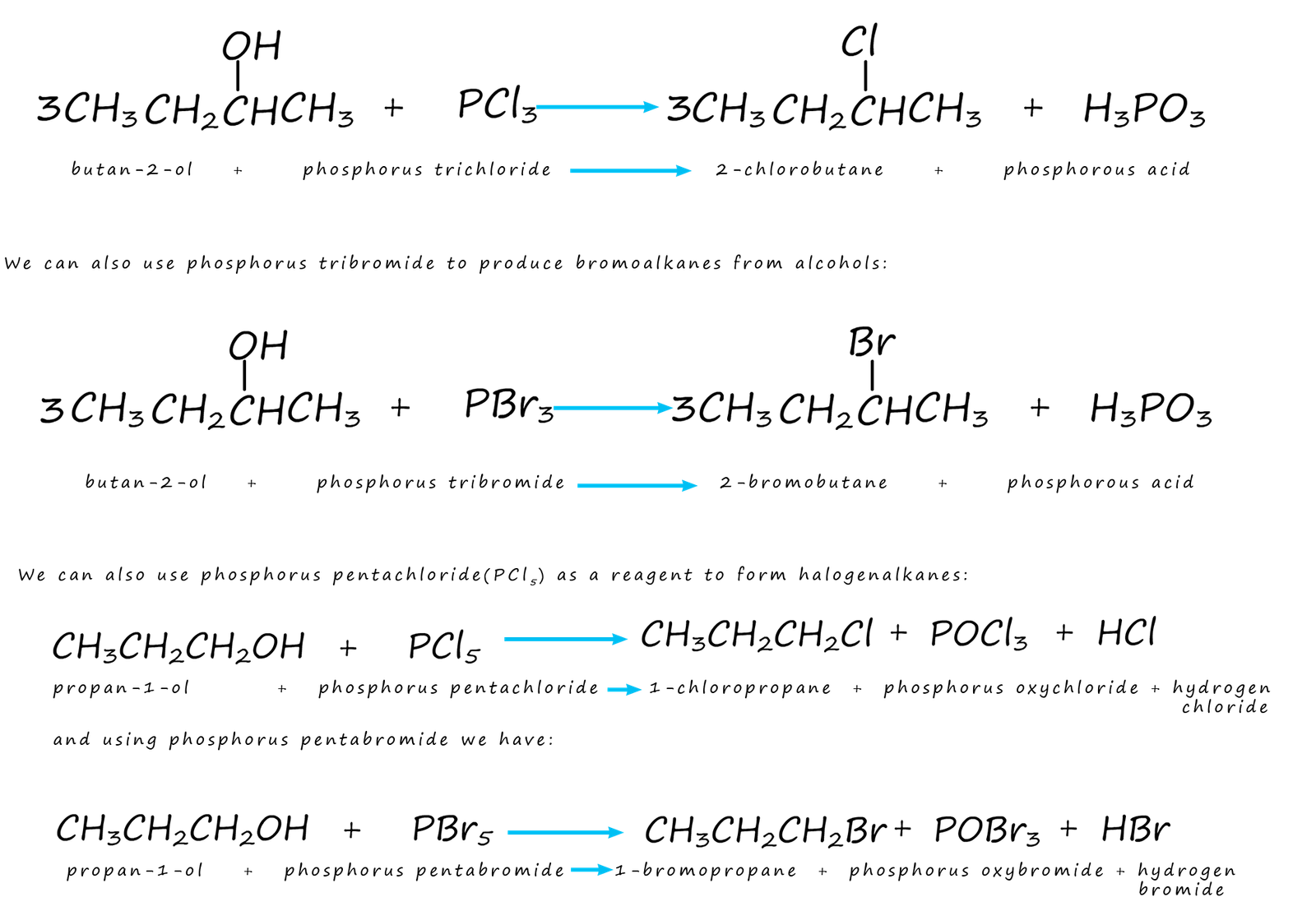
Similar reactions as above can be used to prepare iodoalkanes, however phosphorus (III) iodide (PI3) is unstable, so it needs to be prepared in situ. That is it is made in the reaction flask from a mixture of red phosphorus and solid iodine, once the phosphorus triiodide forms in the flask it reacts with the alcohol to form the iodoalkane.
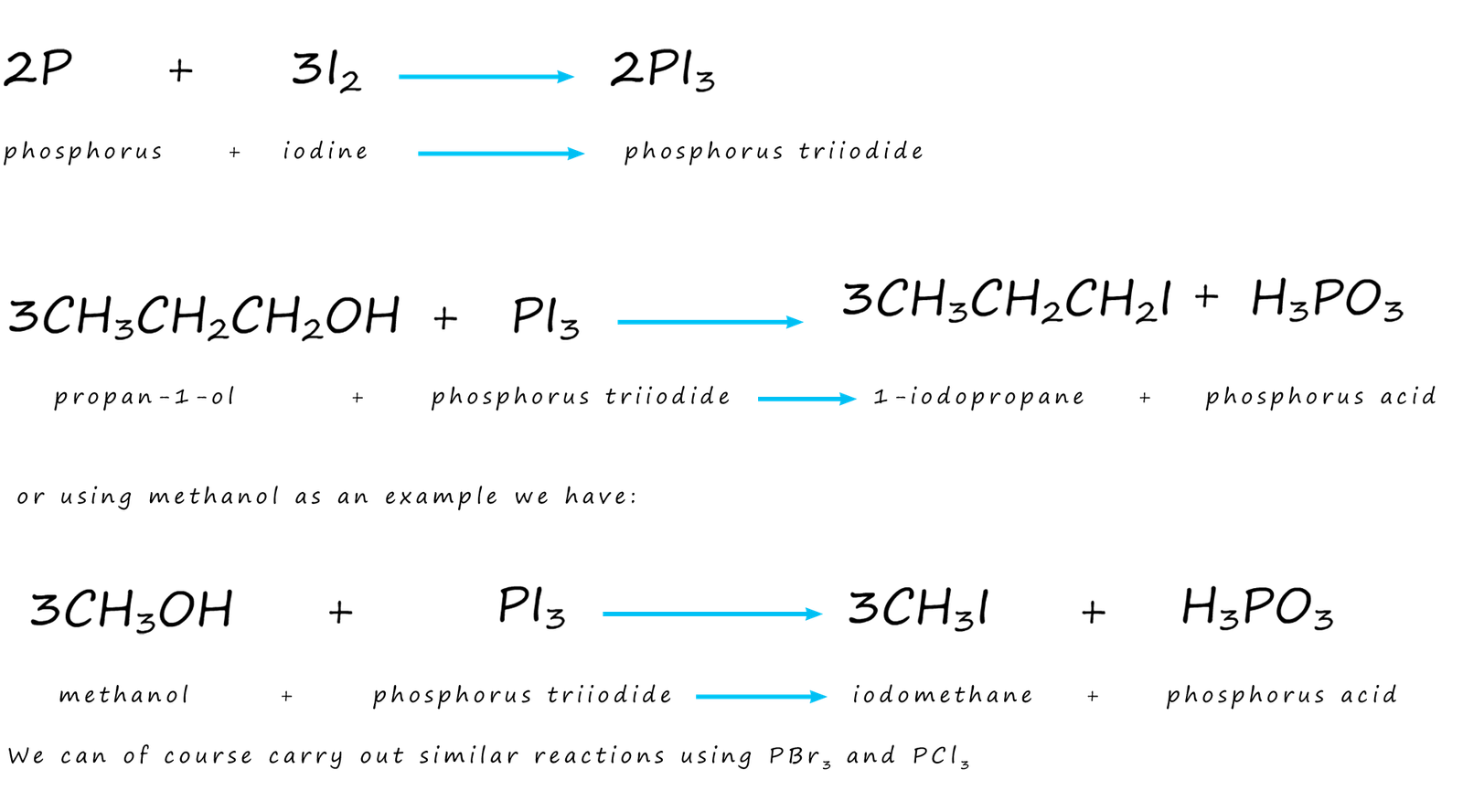
These halogenation reactions all take place in mild conditions, unlike the reactions involving concentrated acids. This is likely to ensure that any "fragile" molecules stay intact. The examples below show the use of other halogenating agents to form halogenalkanes from primary alcohols.

As we have seen above chloroalkanes can be prepared by reacting an alcohol with phosphorus pentachloride (PCl5) and phosphorus trichloride:

However in the lab it is often easier to use the reaction of concentrated hydrochloric acid with tertiary alcohols to form tertiary halogenalkanes. As an example consider the reaction of the tertiary alcohol 2-methylpropan-2-ol with concentrated hydrochloric acid to form the tertiary halogenalkane 2-chloro-2-methylpropane, this reaction can be summarised as:
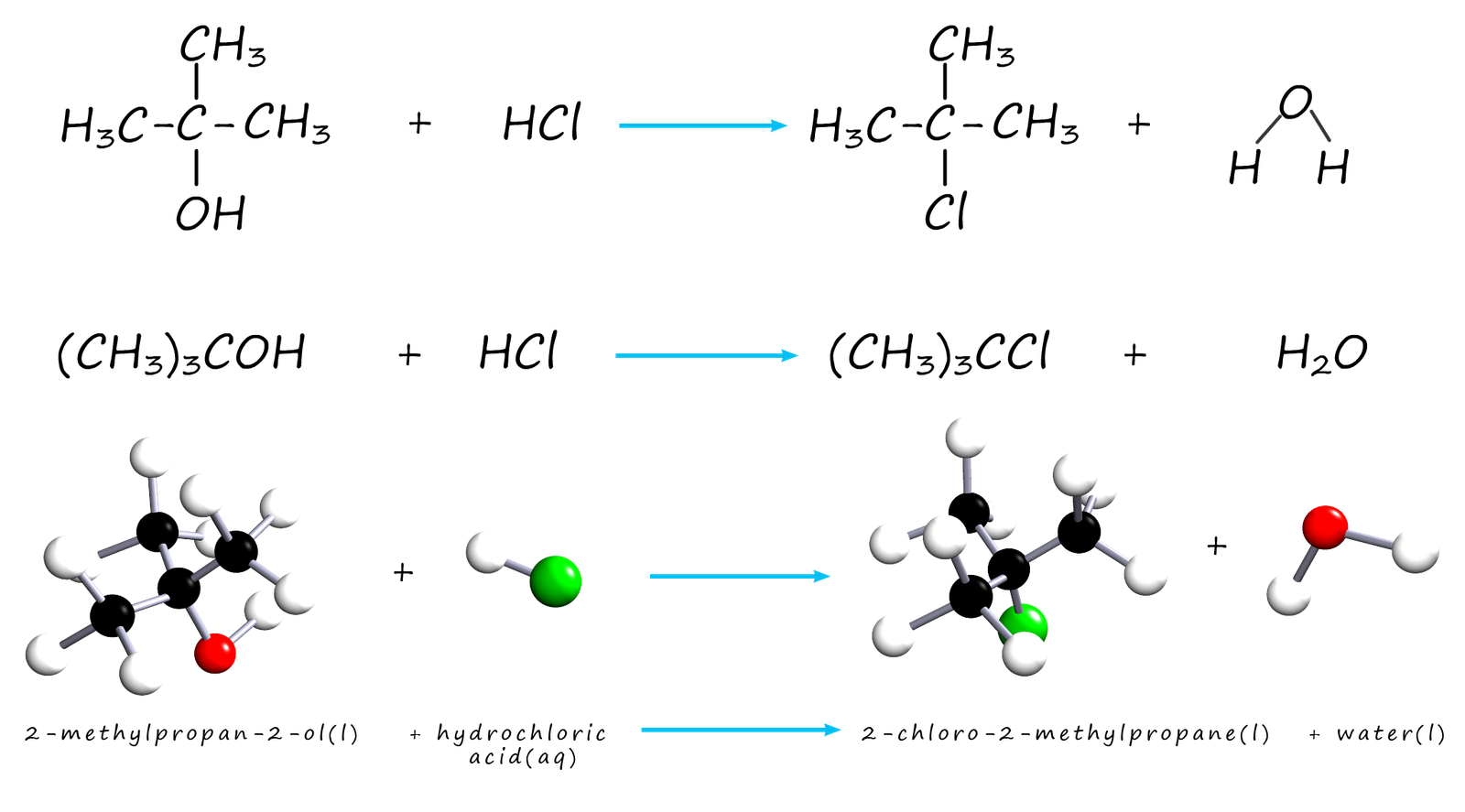
Below is a basic outline of a method which can be used to prepare tertiary halogenalkanes using tertiary alcohols.
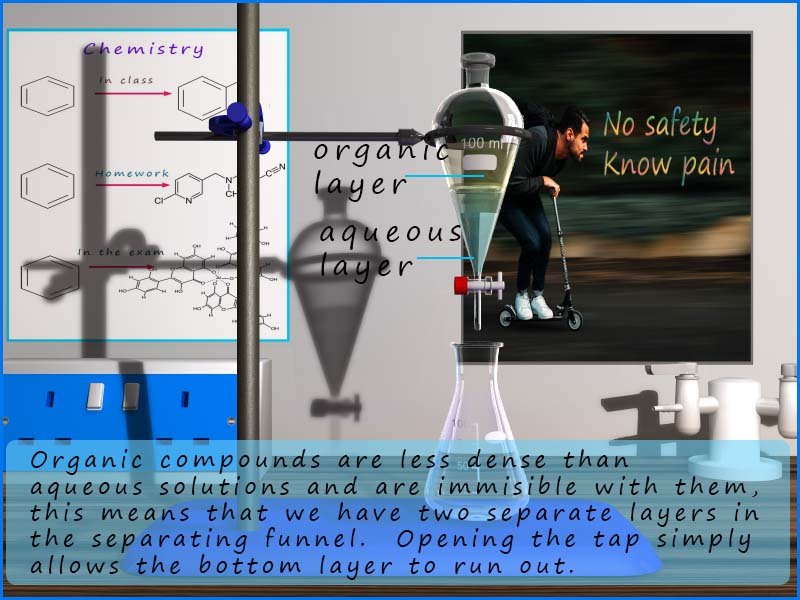
Below is a series of steps which should help you understand the basic method needed to carry out the preparation of 2-chloro-2-methylpropane from the tertiary alcohol 2-methylpropan-2-ol:

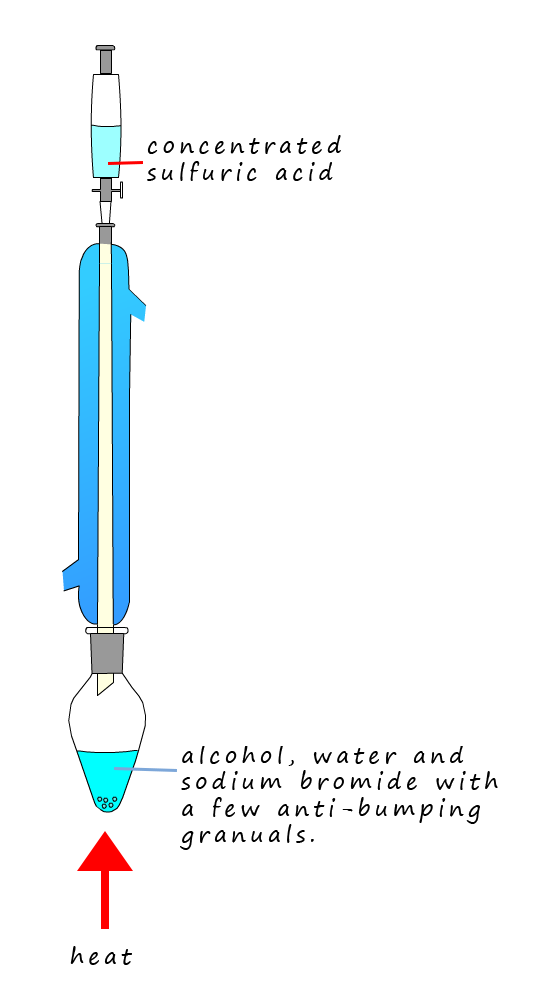
As mentioned above you can react an alcohol with concentrated acid to form the halogenalkane e.g.
You may recall from the module of work you did on the halogens that concentrated sulfuric acid, as well as acting as an acid in its reactions can also act as a reasonably strong oxidising agent. It will for example react with sodium and potassium bromide salts to form hydrogen bromide gas:
We can make use of this reactions to form a bromoalkane. If a mixture of 50% sulfuric acid and sodium bromide in place in a pear shaped flask and then an alcohol such as butan-1-ol is added and the mixture heated under reflux conditions (as shown opposite) for approximately 45 minutes then the halogenalkane 1-bromobutane will be produced in the flask.
You might imagine that we could use a similar method to produce iodoalkanes, however you may recall that if we add concentrated sulfuric acid to solid sodium iodide the reaction is completely chaotic and you end up with a complete mess!! The sulfuric acid will be reduced all the way down to sulfur and even hydrogen sulphide gas, this means that there will be little hydrogen iodide available to react with any alcohol added to this mixture. The solution to this problem is simple; just change the acid to concentrated phosphoric acid. This mixture of phosphoric acid and sodium iodide will form hydrogen iodide (HI) which will react with an alcohol to form the iodoalkane e.g.
We can of course use phosphorus triiodide (PI3) and simply react it with the alcohol as we did above with phosphorus trichloride, however phosphorus(III)iodide is unstable. So a mixture of the alcohol, red phosphorus is mixed with iodine (we can do this with bromine as well to produce PBr3) and the heated under reflux to form the iodoalkane (or the bromoalkane if bromine is used instead of iodine), equations for these reactions are shown below:
